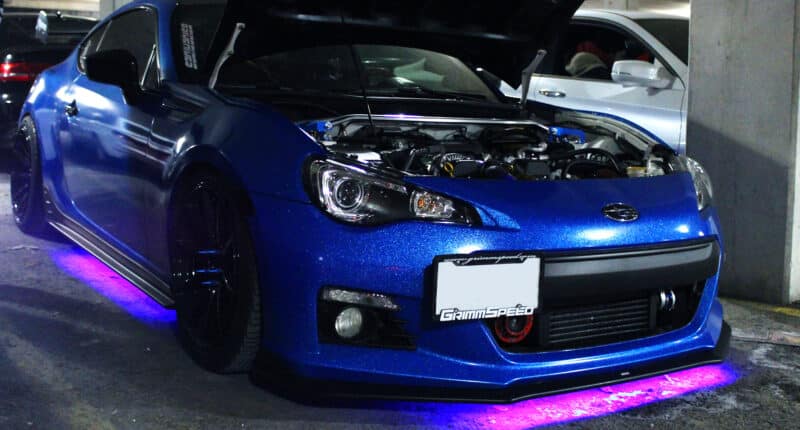To make your car look snazzy and grab some eyeballs, one of the modifications you might want to consider is adding underglow lights.
Underglow is, without a doubt, the best upgrade if you want to elevate your car’s aesthetic appeal.
These lights, also known as underbody or undercarriage lights, are affixed to the bottom of the car’s chassis, lighting up the ground underneath and creating a sort of halo effect around the car.
However, underglow lights are strictly regulated in all 51 states. Extremely bright lights can distract other drivers on the road and cause unnecessary distraction.
What do the laws of the Granite State have to say about underglow lights? Is underglow legal in New Hampshire? Here’s everything you need to know.
New Hampshire Laws for Underglow Lights

Underglow lighting can be of the LED or neon variety. Some states clearly lay down rules for both types of lighting, while others have generic laws that can be taken into consideration for both.
In New Hampshire, all legalities concerning underglow lights are laid down in the New Hampshire Statutes, more specifically in Chapter 266, “Equipment of Vehicles”, under Title 21 “Motor Vehicles”.
The Statutes don’t mention any restrictions on additional lighting. Therefore, it can be assumed that since underglow lighting isn’t expressly mentioned as restricted or allowed, it isn’t illegal to use them in New Hampshire.
However, there are some caveats in place regarding the color of the lighting that can be used. Here’s a more in-depth breakdown of the same:
- Light type: The law makes no mention of either LED lights or neon lights being restricted, so both may be used.
- Size: There is no mention of the size of the lights that can be used.
- Permitted colors: Green, red, amber, and blue lights are not permitted, as these are colors reserved for emergency services. The license plate must be illuminated in white.
- Intensity: The intensity of underglow lighting is not mentioned. However, the license plate should be lit sufficiently enough to be visible from at least 50 feet away.
Additionally, to prevent safety hazards and be a responsible vehicle owner, it is always recommended that you use lights that do not produce glare and scatter properly.
Are Underglow Neon Lights Legal in New Hampshire?

It can be safely assumed that underglow lighting is legal in New Hampshire, as long as you don’t use any of the restricted colors mentioned above.
Blue lights are reserved for officers of the law and their vehicles, whereas red, green, and amber lights are reserved for emergency services.
These colors should neither be used as steady lights, nor as flashing, rotating, or oscillating lights.
Violating this law could earn you a fine of $250 the first time, $500-1,000 the second time, and a misdemeanor or class B felony charge the third time, followed by revoking or suspension of your driving license and privileges for a minimum of 30 days.
Additionally, different counties may have different underglow-related laws, so make sure you always check what the local statutes have to say.
State of New Hampshire Info

Located in the northeastern New England region of the United States, the state of New Hampshire ranks as the fifth smallest state in terms of area.
This state was part of the original 13 states of the country.
New Hampshire is unique for its lack of personal income tax and general sales tax. Surrounded by granite hills, the region is a tourist attraction for its seashore and lake scenery. It is famous for its maple tree products.
Population: 1,320,718
Capital: Concord
Registered vehicles: 1,202,974
Total lane miles: 33,391
Number of highways: 3
Underglow light law reference: New Hampshire Statutes, Chapter 266

